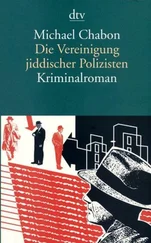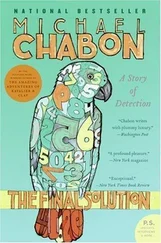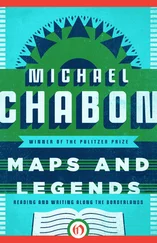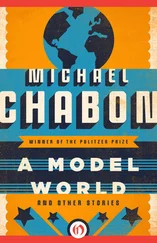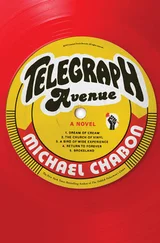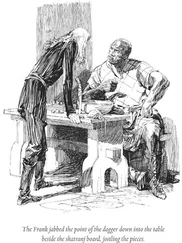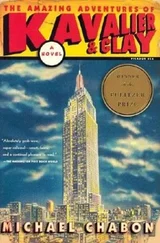Michael Chabon - Manhood for Amateurs
Здесь есть возможность читать онлайн «Michael Chabon - Manhood for Amateurs» — ознакомительный отрывок электронной книги совершенно бесплатно, а после прочтения отрывка купить полную версию. В некоторых случаях можно слушать аудио, скачать через торрент в формате fb2 и присутствует краткое содержание. Год выпуска: 2010, Издательство: Harper Perennial, Жанр: Биографии и Мемуары, Публицистика, на английском языке. Описание произведения, (предисловие) а так же отзывы посетителей доступны на портале библиотеки ЛибКат.
- Название:Manhood for Amateurs
- Автор:
- Издательство:Harper Perennial
- Жанр:
- Год:2010
- ISBN:нет данных
- Рейтинг книги:4 / 5. Голосов: 1
-
Избранное:Добавить в избранное
- Отзывы:
-
Ваша оценка:
- 80
- 1
- 2
- 3
- 4
- 5
Manhood for Amateurs: краткое содержание, описание и аннотация
Предлагаем к чтению аннотацию, описание, краткое содержание или предисловие (зависит от того, что написал сам автор книги «Manhood for Amateurs»). Если вы не нашли необходимую информацию о книге — напишите в комментариях, мы постараемся отыскать её.
is the first sustained work of personal writing from Pulitzer Prize-winning author Michael Chabon. In these insightful, provocative, slyly interlinked essays, one of our most brilliant and humane writers addresses with his characteristic warmth and lyric wit the all-important question: What does it mean to be a man today?
Manhood for Amateurs — читать онлайн ознакомительный отрывок
Ниже представлен текст книги, разбитый по страницам. Система сохранения места последней прочитанной страницы, позволяет с удобством читать онлайн бесплатно книгу «Manhood for Amateurs», без необходимости каждый раз заново искать на чём Вы остановились. Поставьте закладку, и сможете в любой момент перейти на страницу, на которой закончили чтение.
Интервал:
Закладка:
Light blue, aquamarine, orange, purple, maroon, gold, silver, plum, pink — pink Legos! — and many shades of gray: Each of the original primary and secondary tones now has at least five variants, enabling the builder of, say, a Jawa Sandcrawler model to re-create the stippling of rust and corrosion in the Sandcrawler’s hull by varying his palette of reds and grays. I still get a funny feeling, a kind of tiny spasm of moral revulsion, when I pick up a teal or lilac Lego. As for shape, Lego “bricks” left behind the orthogonal world years ago for a strange geometry of irregular polygons, a vast bestiary of hybrid pieces, custom pieces, blanks and inverts, clears and pearlescents, freaks that have their raised dots or their gripping tubes on more than one side at a time. And then there are the people — minifigs, as they’re known among Legographers: Frankenstein monsters, American Indians, Jedi knights and pizza chefs, medieval crossbowmen and Vikings, deep-sea divers and bus drivers, Spider-Man, Harry Potter, Allen Iverson — the range of occupations and personalities to be found among the denizens of the Legosphere is so wide and elaborate that perhaps only the brain of an eight-year-old could possibly master it. I remember the sense of disdain I felt toward the cylinder-headed homunculi when minifigs began to be introduced, around the time when my original interest in Legos was waning. They didn’t have the painted faces back then. Their heads were shiny yellow voids. Their arms and legs couldn’t bend, and there was something of the nightmarish, something maimed, about them. But what I most resented about the minifigs was the scale they imposed on everything you built around them. Like Le Corbusier’s humancentric Modulor scale or Leonardo’s Vitruvian Man, the minifigs as they proliferated became the measure of all things: Weapons must fit their rigid grip, doorways accommodate the tops of their heads, cockpits accommodate their snap-on asses.
It was this sense of imposition, of predetermined boundaries and contours, of a formulary of play, that I found I most resented when Legos returned to my life, around the time my eldest child turned three. (She was into Indians, or rather, “Indians,” especially Tiger Lily; we bought her a fairly complicated Lego set with war-painted minifigs, horses, tepees, a canoe, a rocky cliff.) But along with the giddy profusion of shapes and colors that had taken place during my long absence from the Legosphere, the underlying purpose of the toys also appeared to have changed.
When I first began to play with them in the late 1960s, Legos retained a strong flavor of their austere, progressive Scandinavian origins. Abstract, minimal, “pure” in form and design, they echoed the dominant midcentury aesthetic, with its emphasis on utility and human perfectibility. They were a lineal descendant of Friedrich Fröbel’s famous “gifts,” the wooden stacking blocks that influenced Frank Lloyd Wright as a child, part mathematics, part pedagogy, a system — the Lego System — by which children could be led to infer complex patterns from a few fundamental principles of interrelationship and geometry. They also made, and make to this day, a strong claim on a kid’s senses, snapping together and coming apart with a satisfying dual appeal to the ear and the fingers. They presented the familiar objects one constructed with them — airplanes, houses, cars, faces — on a quirky grid, the world dissolved or simplified into big, chunky pixels.
In their limited repertoire of shapes and the absolute, even cruel, set of axioms governing the way they could and couldn’t be arranged, Lego structures emphatically did not present — and in playing with them, you never hoped for — the appearance of reality. A Lego construction was not a scale model. It was an idealization, an approximation, your best version of the thing you were trying to make. Any house, any town, you built from Legos, with its airport and tramline and monorail, trim chimneys and grids of grass, automatically took on a certain social-democratic tidiness, even sterility (one of the notable qualities of acrylonitrile butadiene styrene, the material from which Lego bricks are made, is that it is sterile).
Orderly, functional, utopian, half imaginary, abstract, primary-colored — when I visited Helsinki a few years back, I felt as if I recognized it, the way you recognize a place from a dream.
By the late nineties, when my wife and I bought that first Indian set, abstraction was dead. Full-blown realism reigned supreme in the Legosphere. Legos were sold in kits that enabled one to put together — at fine scales, in detail made possible by a wild array of odd-shaped pieces — precise replicas of Ferrari Formula 1 racers, pirate galleons, jet airplanes. Lego provided not only the standard public-domain play environments supplied by toy designers of the past fifty to a hundred years — the Wild West, the Middle Ages, jungle and farm and city street — but also a line of licensed Star Wars kits, the first of many subsequent ventures into trademarked, conglomerate-owned, pre-imagined environments. Instead of the printed booklets I remembered, featuring suggestions for the kinds of things you might want to make from your box of squares and rectangles, the new kits came encumbered with fat, abstruse, wordless manuals that laid out, panel after numbered panel and page after page, the steps that must be followed if one hoped — and after all, why else would you nudge your dad into buying it for you? — to end up with a landspeeder just like Luke Skywalker’s (only smaller). Where Lego-building had once been open-ended and exploratory, it now had far more in common with puzzle-solving, a process of moving incrementally toward an ideal, pre-established, and above all, a provided solution.
I resented this change. When my son and I finished putting together a TIE interceptor or Naboo starfighter, usually after several weeks of struggle, a half-deranged search for one tiny black chip of sterile styrene the size of his pinkie nail, and two or three bouts of prolonged despair, the resulting object was so undeniably handsome, and our investment of time in building it so immense, that the thought of playing with it, let alone ever disassembling it, was anathema. But more than the inherent difficulty — which, after all, is an important aspect of puzzle-solving, or the shift from exploration to reproduction — I resented the authoritarian nature of the new Lego. Though I admired and enjoyed Toy Story (1995), the film has always been tainted for me by its subtext of orthodoxy: its implied assertion that there is a right way and a wrong way to play with your toys. Andy, the young hero of Toy Story , uses his toys more or less the way their manufacturers intended — cowboys are cowboys; Mr. Potato Head, with his “angry eyes,” is a suitable mustachioed villain — while the most telling sign that we are to take Sid, the quasi-psychotic neighbor kid, as a “bad boy” is that he hybridizes and “breaks the rules” of orderly play, equipping an Erector-set spider, for example, with a stubbly doll’s head. Sid is mean, cruel, heartless, crazy: You can tell because he put his wrestler doll in a dress. A similar orthodoxy, a structure of control and implied obedience to the norms of the instruction manual and of the implacable exigencies of realism itself, seemed to have been unleashed, like the Dark Side of the Force, in the once bright Republic of Lego.
But I should have had more faith in my children, and in the saving power of the lawless imagination. Like all realisms, Lego realism was doomed. In part, this was an inevitable result of the quirks and limitations inherent in the Lego System, with the distortions that its various techniques of interlocking create. The addition of painted faces and elaborately modeled headgear, weapons, and accoutrements ultimately did little to diminish the fundamental silliness of the minifig; as with CGI animation, the technology falls down at the human form. In depicting people, it makes compromises that weaken the intended realism of the whole. But the technical limitations are only part of the greater failure of realism — defined as accuracy, precision, faithfulness to experience — to live up to the disorder, the unlikeliness, and the recombinant impulse of imagined experience.
Читать дальшеИнтервал:
Закладка:
Похожие книги на «Manhood for Amateurs»
Представляем Вашему вниманию похожие книги на «Manhood for Amateurs» списком для выбора. Мы отобрали схожую по названию и смыслу литературу в надежде предоставить читателям больше вариантов отыскать новые, интересные, ещё непрочитанные произведения.
Обсуждение, отзывы о книге «Manhood for Amateurs» и просто собственные мнения читателей. Оставьте ваши комментарии, напишите, что Вы думаете о произведении, его смысле или главных героях. Укажите что конкретно понравилось, а что нет, и почему Вы так считаете.

